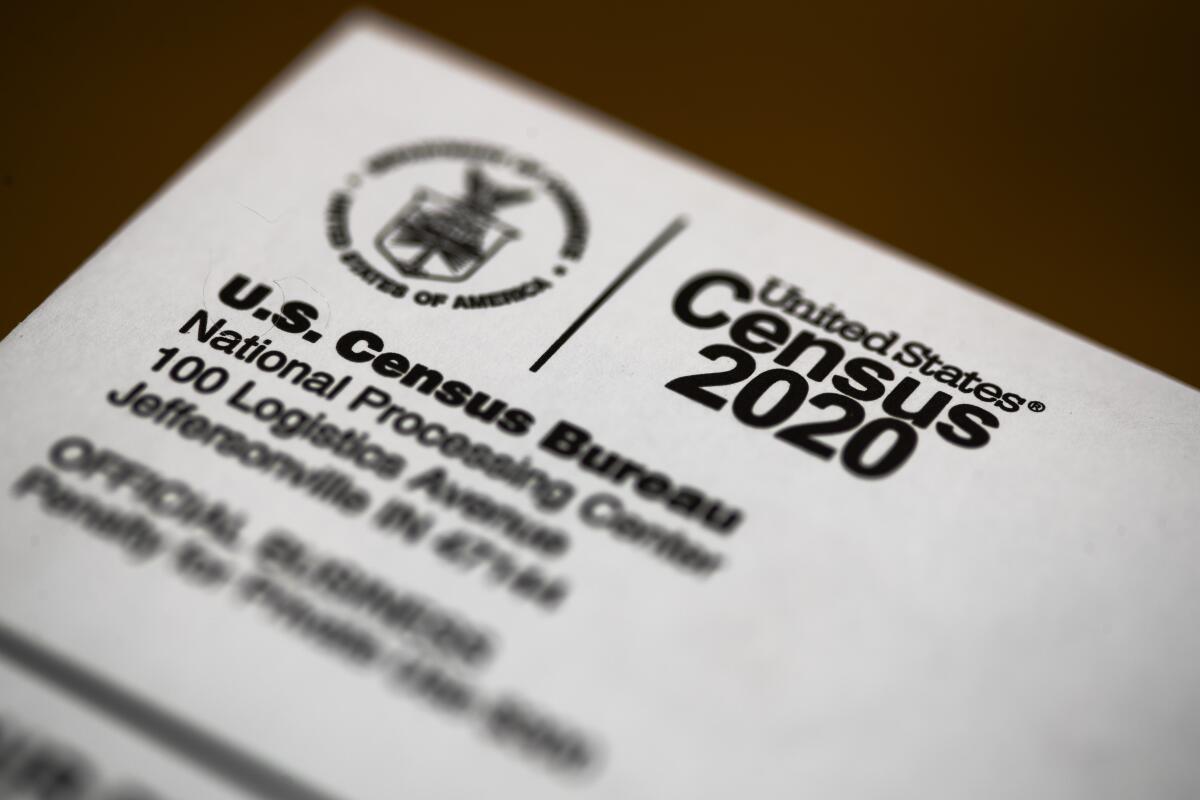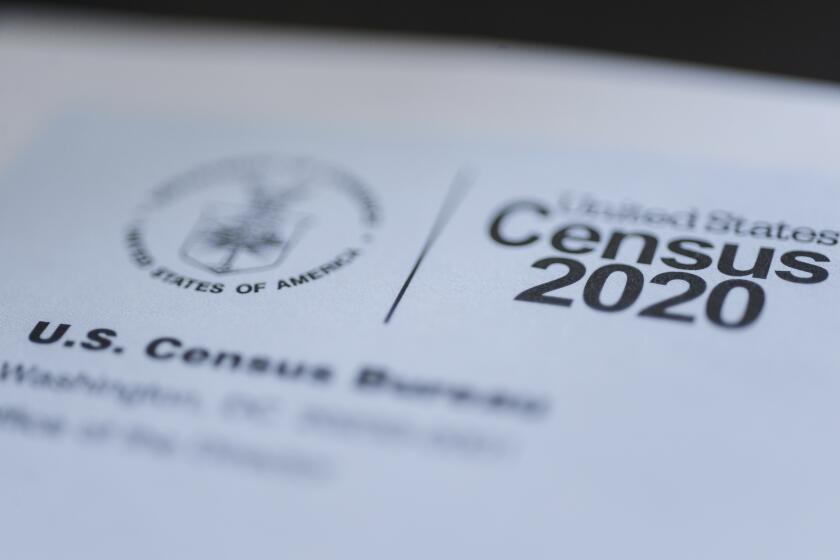Can California Latinos save Democrats in the midterm elections? A new congressional map offers hope

- Share via
With new congressional maps based on the 2020 census, the number of Latino-majority districts in California has grown to 16 from 10. The six new majority-Latino districts could help Democrats retain control of the House. But it might require more from Democrats than they’re willing to give.
Although the state lost a congressional seat because of slower population growth, the independent redistricting commission’s maps approved last month give Latinos more power in line with their still-rising numbers. The 16 majority-Latino districts make up nearly a third of the state’s now 52 congressional seats. The question is whether Democrats can take advantage of those new districts to reduce the Republican-held seats in the California delegation from the current 10.
The new Latino-majority districts are concentrated in the Central Valley, a former Republican stronghold that has turned purple, though white and conservative-leaning corporate agriculture interests continue to have more political power than the larger population of low-income Latinos who work on their farms.
Nearly one-third of state’s districts in Congress would have Latino majorities under independent commission’s plan. The new map also endangers some GOP incumbents.
In District 22, one of the valley’s three majority-Latino districts, the incumbent is Republican Rep. David Valadao, a longtime Hanford dairy farm owner. California Assemblyman Rudy Salas Jr. (D-Bakersfield), who labored in the fields with his father as a child, is running to flip the district. If he succeeds, that would be a victory for Latinos in the Central Valley.
“If Democrats maintain control of the House, it will be because Latino voters came out in places like Orange County and the Central Valley,” Christian Arana, vice president of policy at the California-based Latino Community Foundation, told me.
Orange County, another former GOP stronghold that is now competitive, is also home to a new Latino-majority district.
But some experts caution that redistricting effects won’t be immediate because the new Latino-majority districts encompass rural and historically disenfranchised communities that are hard to organize.
“It often takes an election or two before the community is in a position to take advantage of newly created Latino-majority seats,” says Thomas Saenz, president and general counsel at the Mexican American Legal Defense and Educational Fund.
Opinion Columnist
Jean Guerrero
Jean Guerrero is the author, most recently, of “Hatemonger: Stephen Miller, Donald Trump and the White Nationalist Agenda.”
Republicans can win these districts with low Latino turnout. A long tradition of Latino exclusion in the Central Valley, which persists today at the local level, aggravates distrust in politics. That distrust is not “conducive to participation,” Jesus Martinez, executive director of the Central Valley Immigrant Integration Collaborative, told me.
If Democrats want to tap the power of these Latino-majority districts, they must invest in in-person, door-to-door outreach to these communities, which unevenly benefited from stimulus checks, child tax credits and emergency rental assistance provided by last year’s American Rescue Plan. The plan was rejected by all the state’s Republican members of Congress.
It won’t be enough to remind Latinos of what Democrats have done and how Republicans have fought against assistance. Given the pandemic’s disproportionate toll on Latinos, many will want to know how Democrats would prioritize their families’ economic recovery as well as healthcare and education access.
Citizenship for long-time Latinos who lack legal immigration status is also critical because it is inseparable from the economic and health prospects of their mixed-status communities. So far, Democrats have failed to deliver on that promise.
“Latinos are at the periphery of California politics even though they’re central to the economy and to its future,” Sonja Diaz, founder of UCLA’s Latino Policy & Politics Initiative, told me. She said Democrats should seek Latino candidates who can speak to the concerns of Latino communities.
What’s been happening in South Los Angeles helps explain the browning of brown America.
Many community leaders are optimistic about the long-term consequences of redistricting. Along the southern border, there will now be two congressional districts that are majority Latino. One of the new districts combines the Imperial Valley with parts of the Coachella Valley. The old map encompassed San Diego with the Imperial Valley.
Daniela Flores, co-founder of the Imperial Valley Equity and Justice Coalition, explained that the largely agricultural concerns of the Imperial Valley will receive more consideration now. “We have more political power,” she told me.
Imperial County — the county with the largest percentage of Latino residents in California — saw one of the largest increases in Latino support for Donald Trump between 2016 and 2020. Flores says border militarization creates high-paying jobs in law enforcement and prisons, promoting a conservative ideology among some Latinos. High unemployment rates and chronic neglect of the area’s Latinos add to cynicism and rejection of government.
But the appeal of Trump in this community is mostly with a minority of Latino men who buy into his persona. Republicans are unlikely to make long-term inroads with California Latinos if they stay focused on the culture wars.
“If the insurrectionist wing continues to control the party, they’re going to lose more traction,” Fresno City Councilman Miguel Arias said. “I don’t see them being able to get away from their long history of scapegoating immigrants and finding a boogeyman in the leadership of people of color to focus on the day-to-day challenges that working families have.”
Many of Arias’ constituents have to provide for multiple generations. Arias himself splits his check several ways: for his struggling parents’ needs, his children’s college fund and his retirement. “Just because we’re no longer picking crops as middle-income earners doesn’t mean Latinos don’t have the same issues that our cousins, our parents and our siblings who are in poverty confront every single day,” Arias said.
Whether these new districts will turn to Democrats may well depend on Latinas driving the vote, in the same way they were instrumental in defeating the recall of Gov. Gavin Newsom. “They’re the ones politicians would be wise to pay attention to,” said Pablo Rodriguez, executive director of Communities for a New California Education Fund, noting that Latinas are higher-propensity voters than Latinos.
With the future of the next Congress riding on California’s new districts, Latinas might play a central role in protecting democracy in the long run too.
More to Read
A cure for the common opinion
Get thought-provoking perspectives with our weekly newsletter.
You may occasionally receive promotional content from the Los Angeles Times.












